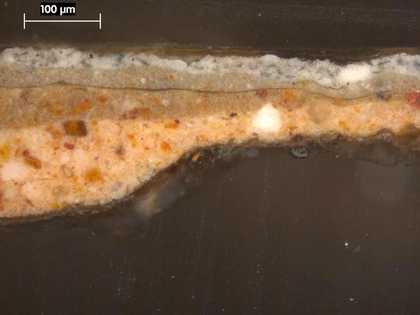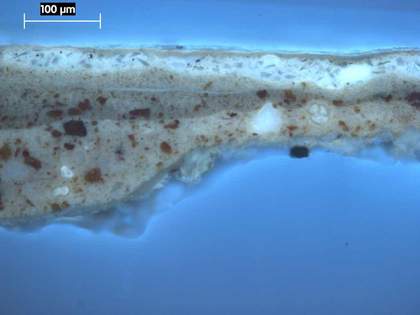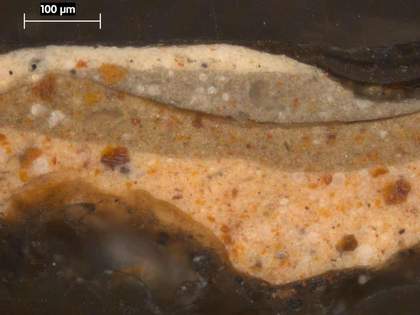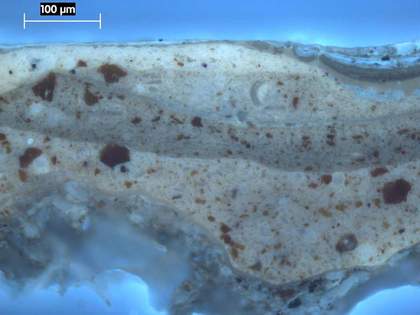
Fig.1
Follower of Jan Wyck
Italianate Landscape with Town and Waterfall
Date not known
Oil paint on canvas
889 x 914 mm
N02986
This painting is in oil paint on canvas measuring 889 x 914 mm. The coarse, plain woven canvas has a weave count of 9 vertical and 13 horizontal threads per square centimetre. The fabric is loosely woven with many slubs and the threads are of uneven thickness. There is cusping along the top and bottom edges but no cusping is present at the uprights (fig.2).1 Diagonal lines of cracking in the paint at both left corners suggests that the original stretcher had corner braces and that the painting has been reduced in width, as there are no comparable cracks at the right corners. The presence of the ground and the painted image on both vertical tacking edges informs us that the width has been reduced in size at both sides but with considerably more removed at the right. Adding the equivalent width of the left hand cracks to the overall width of the painting produces the probable original dimensions of 1220 x 914 mm.

Fig.2
X-radiograph of Italianate Landscape with Town and Waterfall
The ground is reddish brown. Cross-sections show a complex construction of four distinct applications, as follows: the first coat is opaque pale orange in colour and the second a warm, opaque mid-brown. When dry this was coated with a thin, unpigmented substance; its fluorescence in ultraviolet light and positive response to Acid Fuchsin indicates that it is composed of animal glue size. Finally a second coat of the opaque mid-brown was applied over the whole surface (figs.3−7).
No preparatory underdrawing was detectable with infra-red reflectography. The blue of the sky has smalt and lead white as its principal pigments, with vermilion, realgar, black and earth pigments added to vary the tones. Vermilion, realgar and red lake were used for the warm highlights on the figures.2 The varnish is composed of two coats of natural resin varnish, both of which have discoloured with age.
September 2015





